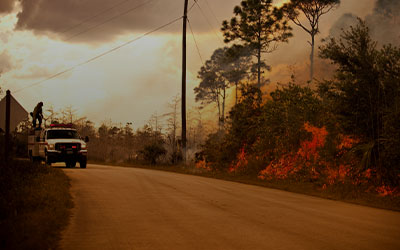Considered a significant emerging risk for the insurance industry, social inflation refers to the trend of rising insurance costs resulting from increased litigation, plaintiff-friendly judgements and higher jury awards, which are ultimately fueled by social trends.1 Specifically, anti-corporate sentiment and significantly increased jury awards against corporate policyholders (i.e. “nuclear verdicts”). More broadly, social inflation is the term used to describe growth in liability risks and costs related to litigation trends.2 In 2019, there were 74 class action settlements totaling $2 billion and four mega-settlements greater than $100 million, representing 45% of all settlement dollars, but only 5% of all cases.3
Who is Most Affected?
While it primarily affects commercial liability lines including commercial auto, medical malpractice, general liability, product liability, umbrella and excess liability (particularly for large corporate risks with large limits), it is also leading to higher personal auto liability claim costs.3 Consumer-facing industries including retail, healthcare, automotive, insurance, pharmaceutical and financial services are the most impacted by social inflation, but any industry is potentially susceptible.
Factors Driving Social Inflation
Social inflation is a multi-faceted issue, certain to be influenced by the coronavirus pandemic and continued societal changes.4 Key factors impacting social inflation include:
- Changes in underlying beliefs and attitudes regarding lawsuits
- Expectations of higher award verdicts by the public and juries
- Rollbacks of cost control measures, such as tort reform
- Legislative action to extend or repeal statues of limitations
- Heightened involvement by attorneys in liability claims
Losses attributable to social inflation have risen substantially over the last six years and at a higher pace than would be expected from normal inflation. Ultimately, social inflation results in higher insurance costs for consumers. Fewer suits were brought in 2020, due to court closures and slower litigation processes caused by a remote environment and social distancing requirements. Going forward, this could result in more settlements in social inflation cases.
Ways to Mitigate This Risk
Securing appropriate insurance coverage is the first and most important step companies can take to protect themselves against social inflation risk. However, risk mitigation strategies should also be employed, including: safety programs; property maintenance; risk transfer strategies; comprehensive claims management approach.
How EPIC is Positioned to Help
Partnering with a broker who understands a firm’s unique risk profile is essential. EPIC’s claims specialists apply innovative and tailored solutions to each situation, along with cutting-edge analytical tools and a collaborative litigation strategy to ensure clients are fully prepared and ideally situated for positive outcomes.
Contact EPIC today to ensure that your organization is prepared to handle the emerging risk of social inflation.
DOWNLOADABLE RESOURCES
Resources for Further Study
1“What is Social Inflation, and Why is it Hurting Insurance?” Bethan Moorcraft, Insurance Business Magazine. Published January 3, 2020 and accessible online at: https://www.insurancebusinessmag.com/us/news/breaking-news/what-is-social-inflation-and-why-is-it-hurting-insurance-195626.aspx
2“Social inflation in the U.S. and Globally.” Larry Crotser, NU Property & Casualty 360. Published October 2, 2020 and accessible online at: https://www.propertycasualty360.com/2020/10/02/social-inflation-in-the-u-s-and-globally/
3“Social Inflation and COVID-19.” Jeff Dunsavage, Insurance Information Institute. Published July 6, 2020 and accessible online at: https://www.iii.org/insuranceindustryblog/social-inflationand-covid-19/
Related Content
Products
Risk Management
Our experienced teams take an enterprise-wide approach, consulting closely with you to identify, analyze and ...
Programs
EPIC Programs provides best-in-class customized risk management and insurance programs for the members of ...
Industries
Successfully managing risk is the most effective strategy to protect and grow your business. We help our ...


